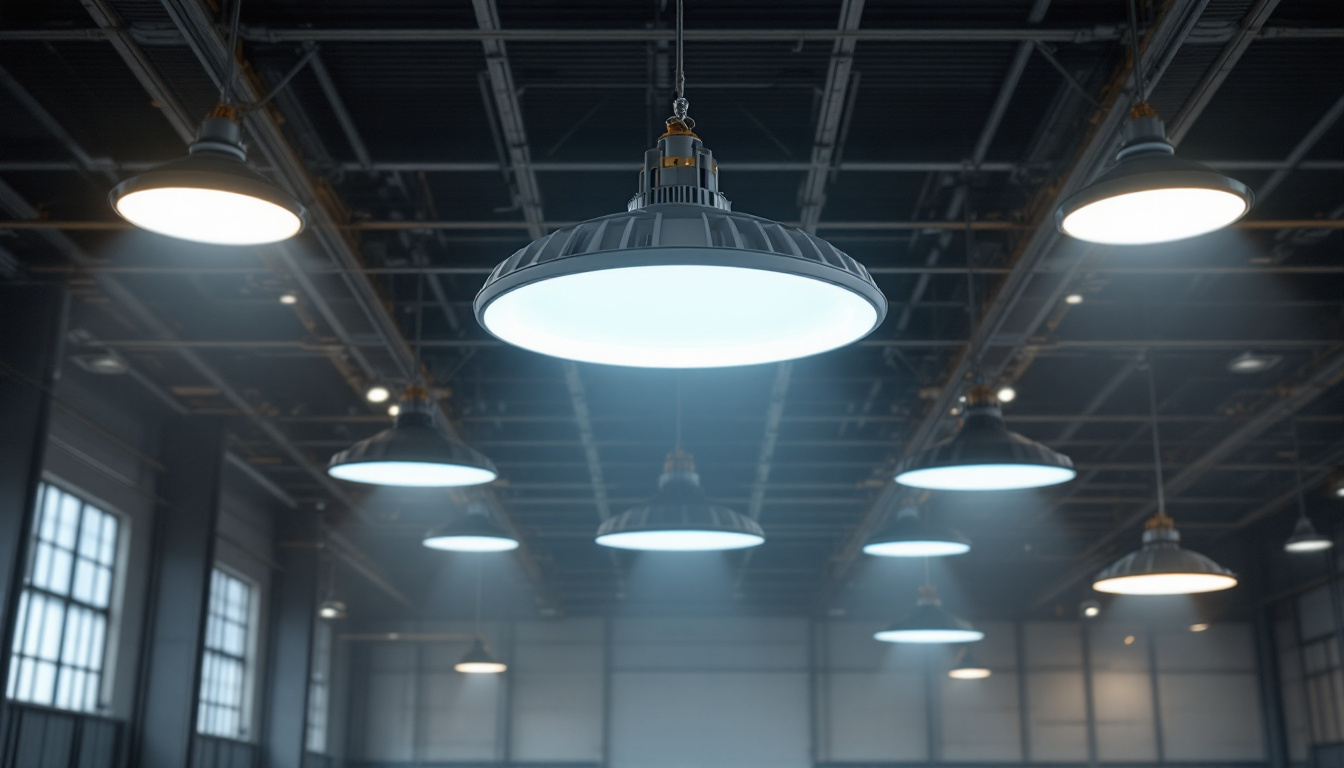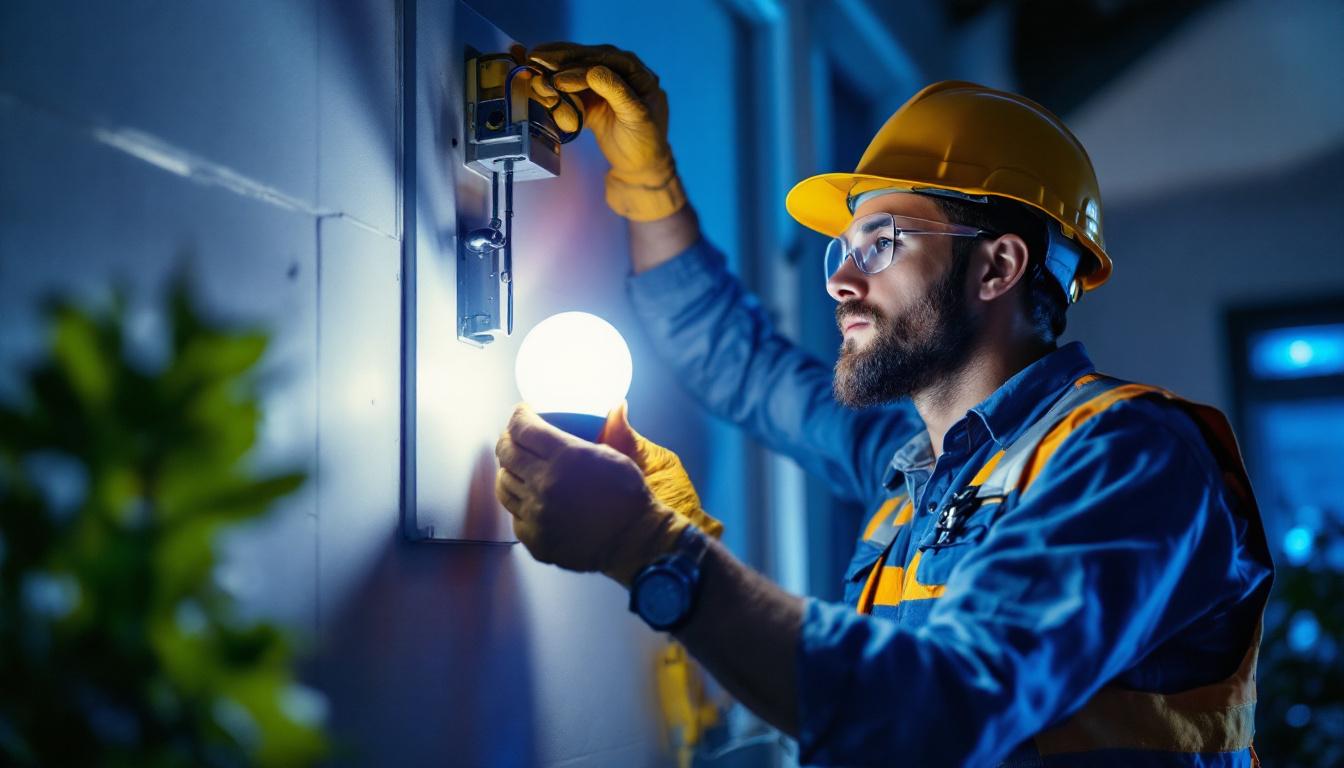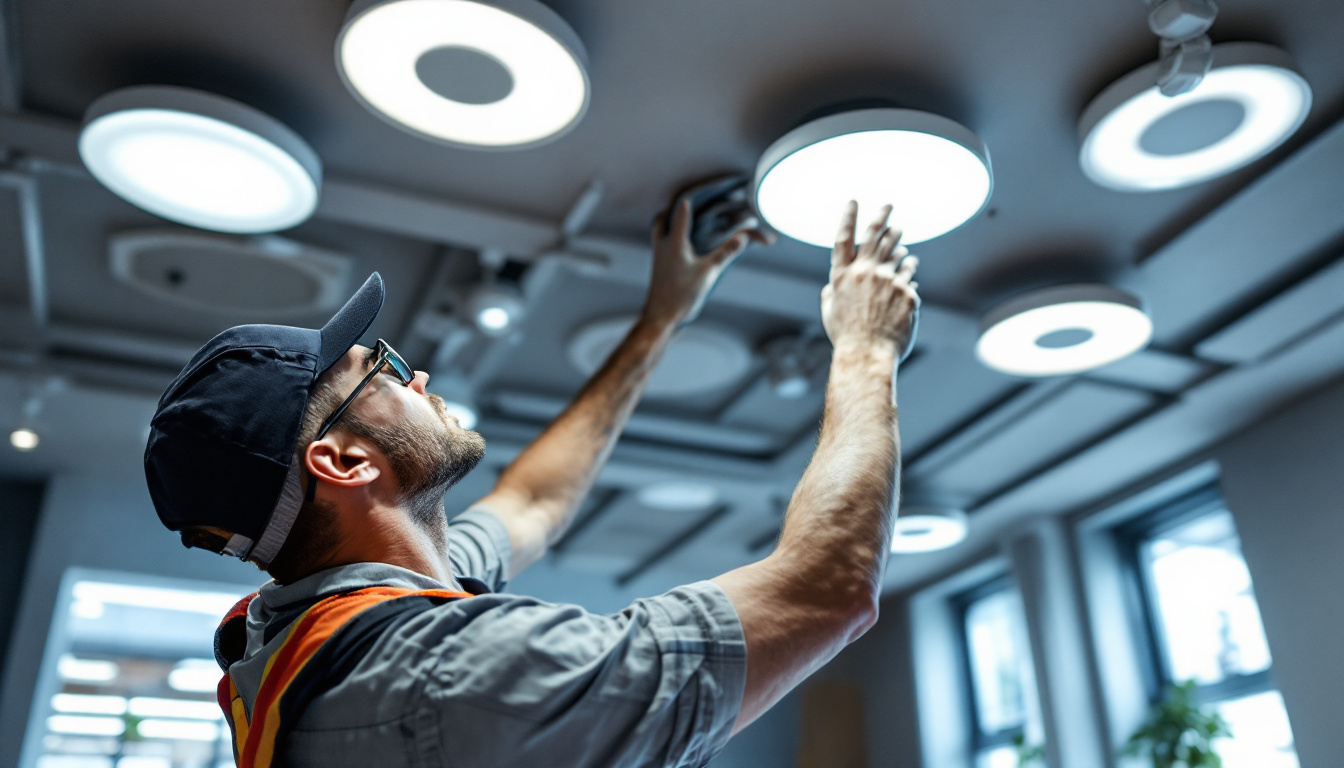
High bay light fixtures are critical components in industrial and commercial lighting applications. For lighting professionals, understanding the nuances of these fixtures can significantly impact the quality of the lighting design and the overall effectiveness of the installation. This article provides a comprehensive checklist that lighting contractors can use to ensure they select the right high bay fixtures for their projects.
High bay lighting is specifically designed for spaces with high ceilings, typically ranging from 15 to 40 feet. These fixtures are essential in warehouses, manufacturing plants, gymnasiums, and large retail spaces, where adequate illumination is necessary for safety and productivity. The right high bay light can enhance visibility while also contributing to energy efficiency. With advancements in technology, many high bay lights now utilize LED technology, which not only reduces energy consumption but also has a longer lifespan compared to traditional lighting solutions. This shift towards LED lighting has made it possible for businesses to significantly lower their operational costs while maintaining optimal lighting conditions.
Before diving into the specifics of high bay fixtures, it is important to differentiate between high bay and low bay lighting. Low bay fixtures are used in areas with ceilings lower than 15 feet. Understanding this distinction helps in selecting the appropriate lighting solution based on the ceiling height and the specific requirements of the space. Additionally, the design of the fixtures varies; high bay lights often feature reflective surfaces and lenses that help direct light downward, maximizing illumination in expansive areas, while low bay lights may have a more compact design suitable for lower ceilings.
High bay lights serve various applications, including but not limited to warehouses, manufacturing facilities, and large retail spaces. In warehouses, for example, proper lighting can improve safety and efficiency, allowing workers to navigate the space easily. In manufacturing, high bay lights can illuminate workstations, ensuring that tasks are performed accurately and safely. Furthermore, in gymnasiums and sports facilities, high bay lighting is crucial for creating an environment that enhances athletic performance, as it minimizes shadows and provides uniform light distribution across the playing area. This is particularly important during events where visibility can impact both player safety and spectator enjoyment.
Moreover, high bay lighting can also be tailored to meet specific needs through the use of smart lighting controls. These systems can adjust the brightness based on occupancy or natural light levels, further enhancing energy efficiency. In retail environments, for instance, strategically placed high bay lights can highlight merchandise and create an inviting atmosphere, encouraging customers to explore the space. The versatility of high bay lighting makes it a vital component in various sectors, adapting to the unique demands of each environment while promoting safety and efficiency.
When selecting high bay light fixtures, several factors must be taken into account to ensure optimal performance and efficiency. This checklist will guide lighting professionals through the essential considerations.
The brightness of a high bay light is measured in lumens. Understanding the required lumen output for the specific application is crucial. Different areas may require varying levels of brightness; for instance, a warehouse may need higher lumens compared to a gymnasium. A general rule of thumb is to aim for 50 to 100 lumens per square foot, but this can vary based on the specific needs of the space. Additionally, it is important to consider the height of the ceiling and the layout of the space, as these factors can influence how light is distributed and perceived. For example, a higher ceiling may require fixtures with a higher lumen output to ensure adequate illumination reaches the floor level, while also minimizing shadows that could affect visibility and safety.
Color temperature, measured in Kelvin (K), affects the ambiance and functionality of a space. High bay lights typically range from 3000K to 5000K. Warmer temperatures (3000K) create a cozy atmosphere, while cooler temperatures (5000K) resemble daylight and are ideal for task-oriented areas. Selecting the appropriate color temperature can enhance productivity and comfort. Furthermore, it is worth noting that different industries may have specific preferences for color temperature; for instance, retail spaces often benefit from warmer lighting to create an inviting environment, while manufacturing facilities may prefer cooler tones to improve focus and alertness among workers. Understanding the psychological effects of color temperature can help in making informed decisions that align with the intended use of the space.
Energy efficiency is a critical factor in modern lighting design. LED high bay fixtures are increasingly popular due to their lower energy consumption and longer lifespan compared to traditional options like metal halide or fluorescent lights. When choosing fixtures, consider the wattage and the overall energy savings they offer, as this can significantly impact operating costs over time. Additionally, it is beneficial to look for fixtures that come with energy-saving features such as dimming capabilities or motion sensors, which can further reduce energy usage by adjusting light levels based on occupancy or natural light availability. By investing in energy-efficient lighting solutions, businesses can not only lower their utility bills but also contribute to sustainability efforts by reducing their carbon footprint.
High bay fixtures come in various types, each with unique features that cater to different applications. Understanding these types can help lighting professionals make informed decisions based on the specific needs of their projects.
LED high bay lights are known for their energy efficiency and longevity. They can last up to 50,000 hours, significantly reducing maintenance costs. Additionally, they offer instant illumination without warm-up time, making them ideal for areas that require immediate lighting. Their versatility allows them to be used in various settings, from warehouses to retail spaces.
Metal halide fixtures are another popular option, especially in applications requiring high-intensity light. They provide excellent color rendering, making them suitable for spaces where color accuracy is essential. However, they have a shorter lifespan compared to LEDs and consume more energy, which can lead to higher operational costs.
Fluorescent high bay lights are often used in commercial settings due to their affordability and decent energy efficiency. While they do not match the longevity of LEDs, they are still a viable option for budget-conscious projects. However, they may require more frequent replacements and can have longer warm-up times.
Proper installation is crucial for maximizing the performance of high bay light fixtures. Lighting professionals should be aware of several key factors during the installation process.
The mounting height of high bay lights directly affects their performance. Fixtures should be installed at the appropriate height to ensure even light distribution and minimize shadows. Generally, the higher the fixture, the more powerful the light source needs to be to achieve the desired illumination levels.
Creating an effective lighting layout involves strategic placement of fixtures to ensure uniform light distribution. Lighting professionals should consider the spacing between fixtures based on their lumen output and the specific requirements of the space. A well-planned layout minimizes dark spots and enhances overall visibility.
Incorporating dimming capabilities and lighting controls can enhance the functionality of high bay lighting. Dimming allows for flexibility in light levels based on the activity taking place, while controls such as motion sensors can further improve energy efficiency by ensuring lights are only on when needed.
Regular maintenance is essential for ensuring the longevity and performance of high bay light fixtures. Lighting professionals should establish a maintenance plan that includes routine inspections and cleaning.
Dust and debris can accumulate on fixtures, reducing their effectiveness. Regular cleaning helps maintain optimal light output and ensures safety in work environments. Depending on the environment, cleaning schedules may vary; industrial settings may require more frequent cleaning compared to retail spaces.
Routine inspections are vital for identifying any damage or wear to fixtures. This includes checking for flickering lights, damaged lenses, or loose connections. Addressing these issues promptly can prevent more significant problems and ensure consistent lighting performance.
As technology advances, upgrading lighting systems can lead to improved efficiency and performance. Lighting professionals should stay informed about new products and technologies that can enhance their projects. Transitioning to newer, more efficient fixtures can result in significant energy savings and reduced maintenance costs.
Adhering to local regulations and industry standards is crucial for lighting professionals. Understanding these requirements ensures that installations are safe, efficient, and compliant with applicable laws.
Many regions have established energy codes that dictate the minimum efficiency standards for lighting systems. Familiarizing oneself with these codes is essential for ensuring compliance and avoiding potential penalties. Lighting professionals should stay updated on any changes to these regulations.
In addition to energy codes, safety standards must be considered during the installation of high bay fixtures. This includes adhering to guidelines set forth by organizations such as the National Fire Protection Association (NFPA) and the Occupational Safety and Health Administration (OSHA). Compliance with these standards ensures a safe working environment for both workers and customers.
Increasingly, sustainability is becoming a priority in lighting design. Professionals should consider the environmental impact of their lighting choices, including energy consumption and the disposal of old fixtures. Opting for energy-efficient products and sustainable practices can enhance a company’s reputation and contribute to a greener future.
High bay light fixtures play a pivotal role in illuminating large spaces effectively and efficiently. By adhering to the essential checklist outlined in this article, lighting professionals can ensure they select the right fixtures for their projects. From understanding the types of fixtures available to considering installation and maintenance needs, a comprehensive approach will lead to successful lighting solutions that meet both client expectations and regulatory requirements.
Ultimately, the goal is to create well-lit environments that enhance safety, productivity, and comfort. With the right knowledge and tools, lighting contractors can navigate the complexities of high bay lighting and deliver exceptional results for their clients.
Ready to elevate your lighting projects with the highest quality high bay light fixtures at unbeatable prices? Look no further than LumenWholesale. Our spec-grade lighting selection is designed to meet the rigorous demands of any space, ensuring you deliver safety, productivity, and comfort with every installation. Say goodbye to middleman markups and hello to superior lighting solutions that fit your budget. Plus, with free shipping on bulk orders, you can trust that you’re getting the best value without any hidden costs. Make the smart choice for your lighting needs and experience wholesale lighting at the best value today.

Explore the science of modern flush mount lighting and discover how it transforms spaces.

Discover why sourcing pendant lighting in bulk from local distributors might not be the best choice.

Discover essential LED lamp safety tips and lighting contractor best practices to ensure secure, efficient installations.

Discover essential tips and expert advice for lighting contractors on mastering LED light fixtures for ceilings.